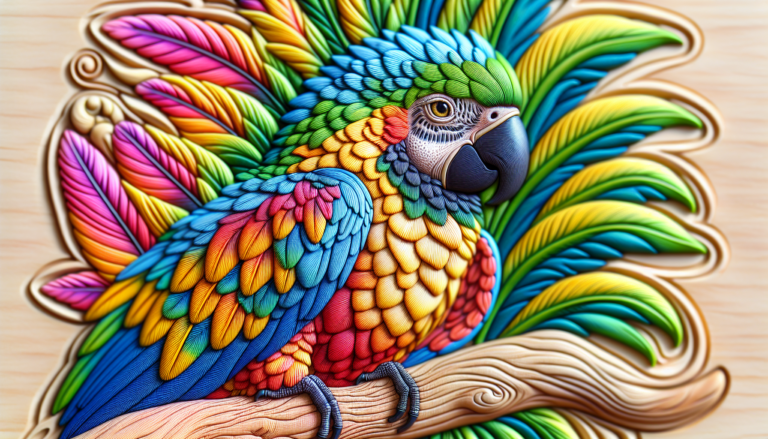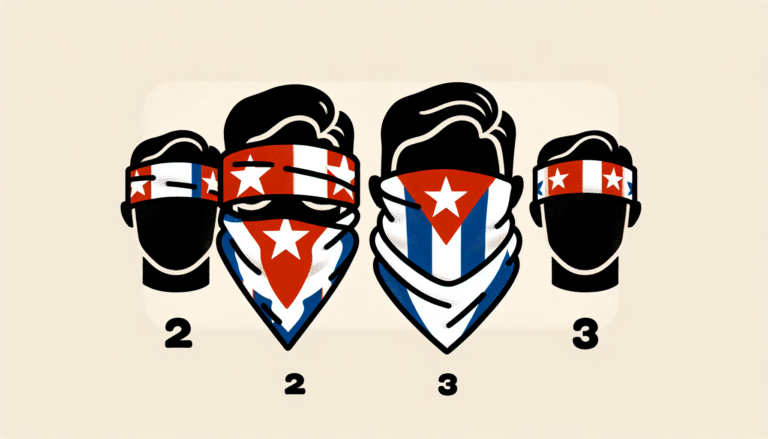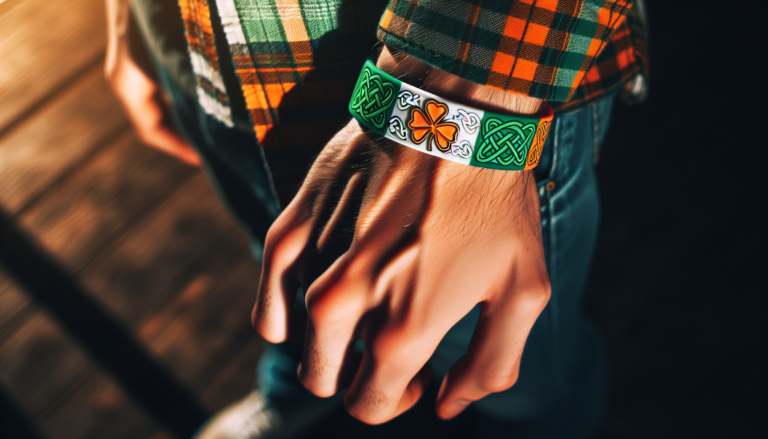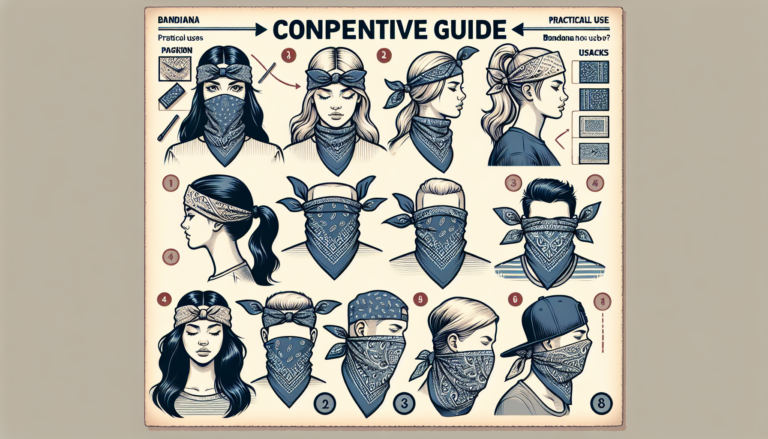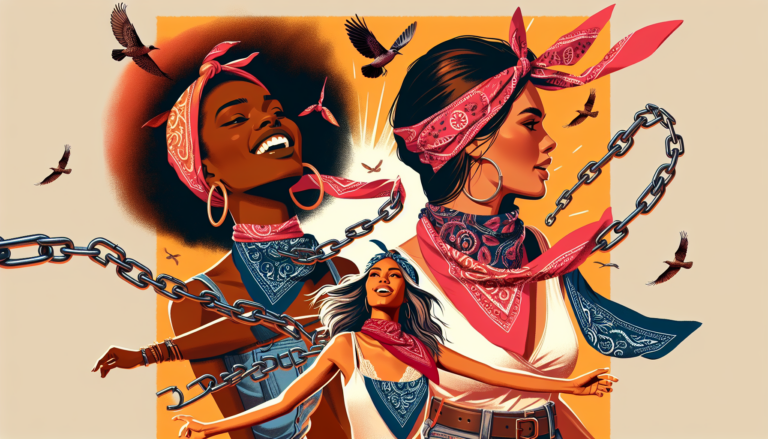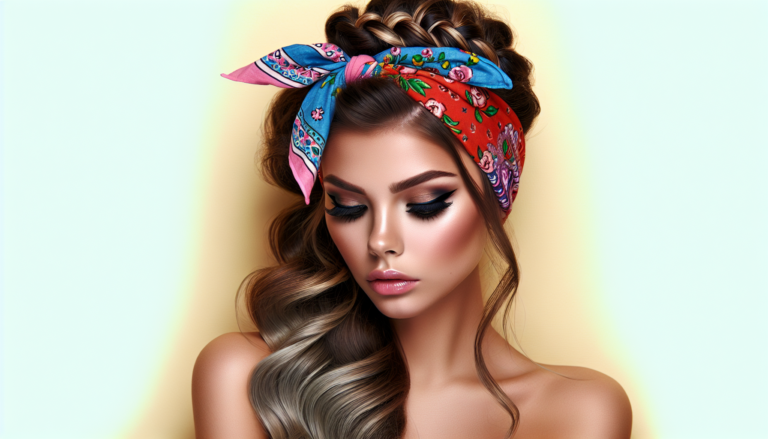The humble bandana is probably the most versatile fashion accessory of them all. In fact, it’s not too much of a stretch to say that if you own a bandana, you have an extended wardrobe.
And the bandana serves admirably as a group identifier and ideological symbol. Just think of cowboys and their red paisley bandanas and politicians and their sloganeering bandanas in the early part of the twentieth century.
But there is one group that has adopted the bandana and made it especially their own. And that is the LGBTQ community. So let’s take a look at how this came about, how it has evolved, and how the bandana represents LGBTQ pride at parades.
Why Do Gays Wear Bandanas?

Here’s a brief overview of why gays wear bandanas and the early origins of how the bandana represents LGBTQ pride at parades . . .
In the 1970s the bandana began to serve as a group identifier for gays. Often, different colors signified sexual preferences, which was referred to as the “hanky code.” Different colors of bandanas hanging from different pockets visibly communicated sexual preferences and fetishes, in a kind of insider code, for members of a community that was still largely underground.
The hanky code has now been a part of underground (and often fairly open) gay culture for going on 50 years. Although it is far less utilized now, you can still find practitioners, especially in the leather community.
Basically, the hanky code was a means to signal your sexual preferences. Wearing a bandana of a particular color on a specific part of your body indicated what kind of sex you enjoy. A certain color/pattern was used to represent a specific sexual activity, and the positioning indicated your role preference.
How Did the Hanky Code Gain Popularity in the Gay Community?

So the hanky code was (and is to a lesser degree) a covert sartorial code used by gay men in the 70s and into the 80s. Typically the bandana was worn hanging from a back pocket for sexual signaling.
According to the hanky code, the bandana’s color was associated with a specific sexual practice or fetish. (Early on, it was mostly just red to signal a certain practice.) The back pocket from which the bandana hung indicated the wearer’s preferred sexual role: left pocket for top and right pocket for bottom. As the practice grew and the number of signaling colors increased, gay-oriented businesses began providing decoder lists for those who wanted to purchase bandanas for this purpose.
Use of the hanky code grew throughout the middle part of the 1970s, and the act of using or participating in the hanky code was called “flagging.” As the practice gained momentum, references to it could be seen in magazines and movies.
But with the advent of HIV/AIDS in the mid-80s, use of the hanky code began to decline. But the hanky code and flagging persisted in the gay BDSM subculture. Then in the early 90s it took a new turn when checkered handkerchiefs wear worn in a similar fashion to represent and promote safer sex.
Ultimately, though, the hanky code was the first sartorial code used to covertly communicate a gay identity, as well as sexual availability and sexual preferences. It eventually evolved from a covert signifier to become a declaration of identity.
What Does the Pride March Stand For?

So what about the Pride March and how the bandana represents LGBTQ pride at parades?
It all began with the famous June 1969 Stonewall Uprising in June in New York City. In the early hours, police raided the Stonewall Inn, a gay club in Greenwich Village. A riot ensued followed by six days of violent clashes. And this was the catalyst for the gay rights movement and LGBTQ activism.
To commemorate this event that provided the impetus for gay rights, June was designated as Pride Month. During the month-long celebration, various events are held across the county, including protests, parades, drag performances, and more. But the centerpiece of all this is typically the Pride March.
The Pride March not only provides support for gay rights, but also serves as a memorial for those who have lost their lives to HIV/AIDS. It is, then, a combination of political activism and a celebration of the achievements of the LGBTQ community.
How Do Rainbow Colors Reflect the Diversity of the LGBTQ Community?

One of the most prominent features of the Pride March and all things gay oriented are the rainbow colors, especially the rainbow flag. But where did this phenomenon come from?
The rainbow flag was created in 1978 by a Vietnam veteran and drag performer named Gilbert Baker. Harvey Milk commissioned Baker to create the flag for San Francisco’s annual Pride Parade.
This flag created by Baker in 1978 is now widely used as a symbol of LGBTQ pride. It now has six colors, but originally had eight, and each color has a specific meaning, for example . . .
- Red (current flag) = life
- Orange (current flag) = healing
- Yellow (current flag) = sunshine
- Green (current flag) = nature
- Blue (current flag) = harmony
- Purple (current flag) = spirit
- Hot pink (original flag) = sex
- Turquoise (original flag) = magic/art
3 Fun Ways to Wear an LGBTQ Pride Bandana at Pride Events

Now let’s look at 3 fun ways to wear a pride bandana at events and use your bandana to represent LGBTQ pride at parades . . .
As a Headband

Wearing a bandana as a headband is a classic style, and you can never go wrong with it. So when you want to show your pride, try the Freedom Rainbow Bandana. This 22×22 inch, USA-made bandana comes in a 50/50 poly-cotton blend and features a 68×68 thread count along with an overcast stitched-edge finish for both comfort and durability. Fold it into a band, tie it around your head, and march in style.
As a Head Covering
Just as stylish and far more practical is wearing your pride bandana as a head covering. This style has a long tradition in the African-American community and will protect your head from sun and elements. Check out the large 22×22 inch Gay Flag Bandana: 100% cotton, hemmed stitched-edge finish, and double-sided printing. Whether you’re attending a pride parade or simply showing your support for equality, this bandana is the perfect way to do it. So get one for yourself and one for a friend, and let the world know that love is love.
Around Your Dog’s Neck

You know your furry family member loves to go everywhere you do, so why not take your dog with you to pride events? And be sure to dress your pup accordingly in the Rainbow 2 – Tie Dye Bandana. It’s made from 100% cotton and dyed with natural dyes. It’s the perfect accessory for your pet (or for you) at nearly any outdoor or pride event.
Your Source for Quality, Affordable Pride Bandanas
So now you know how the bandana represents LGBTQ pride at parades. Be sure to get yours and support the cause.
And when you’re ready to get your pride bandanas, go to the bandana source that offers both quality bandanas and great prices coupled with superior customer service – Bandana.com.
Here at Bandana.com, we offer a wide selection of all kinds of bandanas. Get more information about us here.
